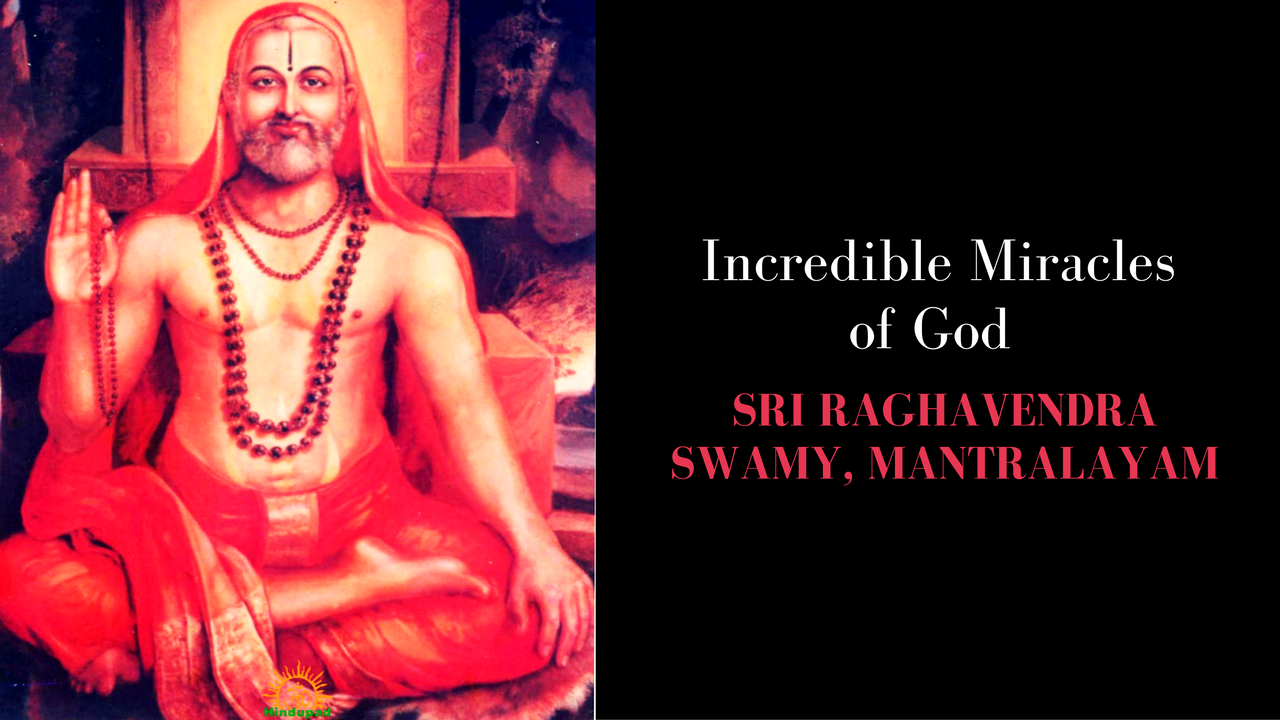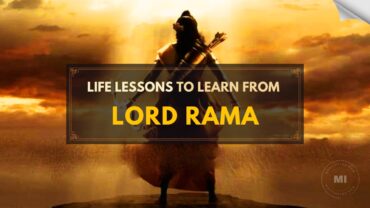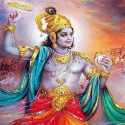Incredible Miracles Of God Sri Raghavendra Swamy, Mantralayam
This post was last updated on January 24th, 2024

Hundreds of years ago, saints and sages used to perform tough penance and attained wisdom, blessings from God and their life’s motive was to preach devotion towards the Almighty and help people in understanding the true meaning of life.
This is why saints were highly respected and some saints were even deemed as God’s incarnation. One such saint who lived during the 16th century and was considered God by many people owing to his several miraculous blessings and work was God Sri Raghavendra Swamy.
Born with the name Sri Venkata Natha in the town of Bhuvanagiri in Tamil Nadu, Sri Raghavendra Swamy was a famous Madhwa saint, philosopher and advocated the Dwaita philosophy. Since he was an ardent devotee of Lord Vishnu or Sri Venkateshwara, he was also called Venkatacharya. After completing his initial education, Sri Venkat Natha was admitted in a matha or temple in Kumbakonam. He was then married to Sarasvati Bai and had a son named Lakshminarayanacharya. Having studied under the expert guidance of Sudheendra Theertha in Kumbakonam, he emerged as a talented scholar. It was in 1614 that he took sanyasa and was given the name Raghavendra Theertha. He is said to have established a Brindavana at Mantralayam where he took Samadhi, located presently in Andhra Pradesh, which is now a popular pilgrimage destination.
In his quest of attaining higher spiritual plane, Sri Raghavendra Swamy never let his life’s struggles deter his faith in the Lord. He never demanded any money for teaching Sanskrit and vedic texts to children nor for his welfare services and this is the reason why he and his family endured a life of poverty. He was bestowed a long divine life that was full of miracles and had healing powers for the welfare of humanity. His miracles are so enormous that people even today chant two powerful lines of his stotra –
“Poojyaya Raghavendraya Sathya Dharma Ratha Yacha
Bajatham Kalpavrukshaya Namatham Kamadenuve.”
This hymn means that the worship of Sri Raghavendra Swamy who is a living example of truth and righteousness (sathya and dharma) blesses with whatever blessing one desires such the Kalpavruksha (the celestial tree) and Kamadhenu (the celestial cow). It is believed that chanting this hymn for several times a day with concentration and sacred mind can eliminate all kinds of ills and problems in life.
He is one saint who is believed to be born as Bhakta Prahlada in the Kritha Yuga and he resides in Mantralayam from where he listens to the calls of people who remember him with true love and devotion. Since his life was miraculous, he taught lessons to many people and blessed with wellness to the needy people through the powers he was blessed with. Even now, people who are devotees of God Sri Raghavendra Swamy are experiencing his presence and blessings in many instances.
Here is a compiled list of his miraculous life:
Contents
Toggle1. Poorvashrama Miracle
During a tour to Kumbakonam with his wife, Sri Venkat Natha was invited to attend a celebration where some of the hosts were not pleased by him and asked him to earn his food by providing a helping hand in the chores. Sri Venkat Natha readily agreed and he was asked to make some sandalwood paste for all the guests. While using the grinding slab for making sandalwood paste, he was reciting vedic mantras and stotras in his mind. When the guests smeared the paste on their bodies, they suddenly felt burning sensation and therefore blamed it on Sri Venkat Natha. He apologised and said that it was because of chanting the Agni Suktam while preparing the paste and it was the result of the power of the vedic mantras. Since this can happen only when a person chants with utmost dedication and devotion, the hosts immediately realised whom they have blamed and apologised. Sri Venkat Natha then prepared sandalwood paste again but this time, he chanted the vedic mantra to Varuna (rain God). When the guests applied this paste, they sensed the coolness of rainwater and the devotion of Sri Venkat Natha for Venkateshwara was reaffirmed in their eyes.
2. Moksha Of His Wife Sarasvati Bai
On the day when Sri Venkat Natha was about to take the pledge of Sanyasa, his wife, Sarasvati Bai had a sudden desire to see her husband’s face for the very last time . She ran towards the matha but the strong blowing winds restricted her to go further. In utter disappointment, she committed suicide by jumping into a well. Her soul was then trapped between earth and heaven as she died before time. In order to fulfil her last wish, her soul travelled to the matha and by now, her husband had become Sanyasi Sri Raghavendra Theertha. But Sri Raghavendra Swamy immediately sensed the presence of his wife’s soul and sprinkled some holy water on her as a symbol of granting her last wish. This action liberated her soul and she was granted Moksha from the cycle of births and deaths as her reward for selfless service and whole hearted fulfilment of ‘patni dharma’.
3. Drought In Kumbakonam
Once the Tanjore district in Kumbakon suffered from 12 years of incessant drought and this is when the Thanjavur Nayak rule, Sevvappa Nayak approached God Sri Raghavendra Swamy to seek spiritual help. He requested Sri Raghavendra Swamy to perform some yagnas and evoke the rain Gods. As soon as the spiritual rites were performed, the region prospered incredibly. To express his gratitude, the King gifted a gem studded necklace to the matha. Sri Raghavendra Swamy offered the necklace in the yagna as the King’s contribution. The King was annoyed and immediately expressed his feelings. On realising this, Swamyji put his hand in the pious fire and retrieved the necklace in the same condition as was given to him by the King. Neither the necklace nor Swamyji’s hand suffered burns. This incident displayed Sri Raghavendra Swamy’s greatness and compelled the King of Tanjore to become his profound devotee.
4. Nawaab Of Adoni & Poor Shepherd
While on his tour, Sri Raghavendra Swamy met a young shepherd who prostrated before him and paid respects. Swamyji blessed him and told to remember him at times of difficulty. A few days after, Nawaab of Adoni, natively Persian was riding his horse where the young shepherd was grazing his herd of sheep. Soon an ambassador came and handed over a letter to the Nawaab. Since the Nawaab couldn’t read or write the local language Telugu or Kannada, he started looking for someone who can explain him the contents of the letter. He asked the sheep rancher to read the letter for him but he was illiterate and explained his misery in helping him. This angered the Nawaab as he thought that the shepherd was disobeying his orders and threatened that disobeying can cost him his life. In a state of ambiguity and fear, the shepherd prayed to God Sri Raghavendra Swamy and then tried reading the letter. To his surprise, he fluently read the letter and since it comprised of favourable news, the Nawaab was so impressed that he offered the rancher to become the Diwaan of Adoni.
5. Nawaab Of Adoni & Mantralayam
It was from this shepherd that the Nawaab of Adoni got to know about Sri Raghavendra Swamy. Years later after this incident, the Nawaab got the chance to meet Swamyji in person. Instead of paying respects to him, the Nawaab had a cunning plan. He decided to test Swamyji’s spiritual powers and instead of customarily offering alms to a visiting saint as per Hindu customs, he placed a plate of non-vegetarian dishes covered with a piece of cloth as offerings.
As a practise of purifying anything offered for consumption, Swamyji sprinkled holy water from his kamandalam and then he opened the plate. The Nawaab was dumbstruck as he witnessed a miracle since the plate was filled with fruits. In a fit of guilt, the Nawaab apologised and became his ardent devotee. He offered Swamyji any amount of land and wealth but Swamyji refused anything for personal gains and asked the land at Mantralayam on the banks of Tungabhadra river. While the Nawaab insisted on giving a highly fertile region instead for the Mantralayam region that was dry and barren, Swamyji was determined to get this region for his matha as it was the place where Bhakta Prahalad performed yagnas to please Lord Rama during the Dwapara Yuga. Thus the matha in Kumbakonam was shifted to Mantralayam.
6. Jeeva Samadhi
It is known that on the second day of the Sravana Krishna Paksha in 1671, Sri Raghavendra Swamy addressed to hundreds of his devotees and gave strong message about living righteously by surrendering our souls to utmost devotion of Venkateshwara. After delivering a soul stirring speech, Sri Raghavendra Swamy entered the Brindavana constructed from stones that were sanctified by the footsteps of Lord Rama, Sita and Lakshamana when they had come to their village during the Treta Yuga. He asked his disciples to arrange slabs around him after he stops rolling the japamala. He started chanting the pranava mantra and took deep Samadhi. Just as the japamala became still, his disciples followed his instructions and arranged the slabs up to his head. On the top, they placed a copper box comprising 1200 Laxminarayana saligramas and placed the covering slab and sealed it with earth. Then they poured twelve thousand varahas over the Brindavana that was built around Swamyji.
7. Darshan To Sir Thomas Munroe
In 1800, Sir Thomas Munroe, the Collector of Bellary was ordered by the Madras government to collect the entire money holdings by the math and Manthralayam village. The revenue officials however, failed to comply with the order, owing to which Sir Thomas Munroe himself visited the matha for investigation purpose. He removed his shoes and hat to enter the premises and God Sri Raghavendra Swamy came from the Brindavana and conversed to request him to resume the endowment of the matha. Swamyji was visible and audible only to Munroe who also received manthraksha. After returning his office, Munroe wrote an order favouring the matha and the Manthralayam village.
Upon knowing that Sri Raghavendra Swamyji gave darshan and blessings to Munroe, the priests were annoyed as they were never given such darshan despite their selfless service and devotion. That night, Swamyji appeared in the dream of the chief priest and said that during his incarnation as Prahalada, he and Munroe were classmates and he was the chosen one to solve the problem that the matha had encountered.
8. Sri Appanacharya & Sri Raghavendra Strotra
Sri Appanacharya was God Sri Raghavendra Swamy’s most sincere disciple and since he was immensely devoted to Swamyji, he was sent to a town in Karnataka for some work so that he couldn’t obstruct Swamyji from attaining Jeeva Samadhi. On hearing his Guru’s decision on entering Brindavana for taking Samadhi, Sri Appanacharya rushed back to Mantralayam but was thwarted by the flood in Tungabhadra river. He started chanting a 32 stanza hymn praying to his beloved Swamyji, which is now popular as Sri Raghavendra stotra. On hearing this hymn, the flow of the river calmed and Sri Appanacharya was allowed to walk over it.
When Sri Appanacharya reached the matha, he was about to finish the hymn and at this time the last slab was placed on Sri Raghavendra Swamy in the Brindavana. This very scene made him break down with tears and emotions and he found himself unable to finish the last stanza. Suddenly, a voice emerged from the Brindavana saying ‘Sakshee Hayastotra Hee’ that completed the stotra and implied the presence of Sri Hayagreeva, Prahalada and Sri Raghavendra Swamy himself in completing Sri Appanacharya’s hymn.
Recommended: Miracles of reciting Hanuman Chalisa
Recommended For You
8 Life Lessons to Learn From Lord Rama
Snehashree Bhat
A young writer who loves to pen words from creative perspective. Passionate internet surfer, a versatile homemaker and a person who finds pleasure in adopting healthier and positive changes in her persona. An enthusiastic feminist who wishes to make serious changes in the stereotypical thought process of the society via the voice of her words.




